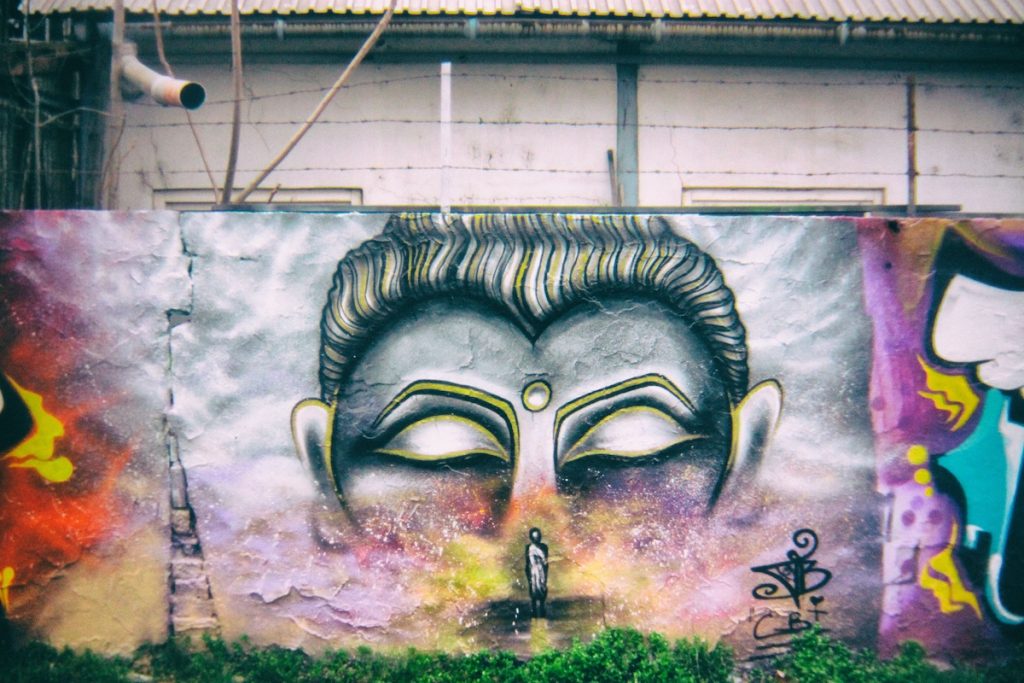The underlying cause of conflict isn’t an enemy or adverse conditions—it’s a thorn lodged within our own heart and mind.
This radical notion from the historical Buddha’s teachings comes with a 2,600-year-old method for dislodging that thorn: by cultivating healthy mind states and changing our inner attitudes and responses, we can transform strife into peace.
Below, Buddhist scholar and teacher Andrew Olendzki, who is hosting Tricycle’s Living in Harmony online course beginning June 26, expands on the Buddha’s timeless lessons on dealing with inner fear, pain, and violence, and how looking inward can help us live in peace with others.
Can you define the various types of conflict—such as war or a dispute with a loved one—in the Buddhist teachings? Are there different antidotes to relieving these different types of suffering or a more all-encompassing solution?
Buddhism tends to look inward rather than outward, so it organizes the different kinds of conflict not in terms of their outer manifestations but by means of their inner sources. So we have conflicts rooted in anger and others in resentment, hatred, attachment to views, and so forth. The antidotes all have to do with neutralizing or transforming these inner causes of conflict and replacing them with more positive or healthy mind states. Each specific harmful state has a corresponding helpful state that can be cultivated, but the most general solution involves replacing delusion in its many forms with wisdom or understanding.
You teach that the Buddha has some profound insights into why we don’t get along with one another. Why haven’t we been able to master these insights over the last 2,600 years?
This metaphor of a thorn lodged deep in the heart can be used to broadly understand the Buddhist explanation for conflict. We are wounded and in pain, and this drives us mad and makes us lash out at others. The solution is inner healing, but the toxic emotions are powerful and not easily overcome. (Anger can be an effective tool, for example, but we seldom recognize the internal damage it causes.) Anyone can benefit from applying these insights into their lives, though mastery is another matter.
What can early Buddhist literature teach us about the importance of listening and communicating well with others?
One text in particular from the literature focuses on seven practical things that contribute to the wellbeing of groups or organizations. Just to take the first of these, it is healthy for people to open and close their meetings in harmony. There may be a lot of disagreement over priorities or courses of action, and people need to get together to hash things out. But placing such disagreements in the larger context of goodwill toward one another and a shared commitment to a vision, for example, makes a big difference to how effective the communication will be.
What is the Buddha’s advice for living in harmony with people we fundamentally disagree with? Do we have to agree to live peacefully alongside each other? What if we find another’s behavior morally intolerable? What does “living in harmony” look like then?
One key guideline is to not take things personally. People can disagree with one another without feelings of animosity or subtle forms of hatred. Views and opinions can differ, and these can and should be debated vigorously. But to have bad feelings toward the people who hold these views is not necessary and is almost always counterproductive. This is more challenging when morally harmful behavior is involved, but it is still more helpful to criticize the deed rather than the person. We can hold people accountable for their actions, by putting them in jail, for example, while still feeling compassion for the person who was so thoughtless and misguided to have committed the crime.
What is preventing us from living in harmony right now?
The short answer is greed, hatred and delusion, and all the many flavors of unhealthy emotion and behavior that flow from these toxic inner states. Any time we find ourselves in conflict with another, there is something, either subtly or overtly, that we don’t like and want to be different than it is. Or there is something we really want to happen that is not happening. We are used to thinking the only solution to this situation is changing the external circumstances, such as getting the other person to agree with us. The Buddha teaches a whole range of inner skills for changing our own attitudes and way of responding to things. Outer changes can and should still be made, but with an attitude of inner harmony rather than of inner conflict.
Andrew Olendzki’s eight-week online course, Living in Harmony, starts on Monday, June 26. Learn more and sign up here.
Thank you for subscribing to Tricycle! As a nonprofit, we depend on readers like you to keep Buddhist teachings and practices widely available.
